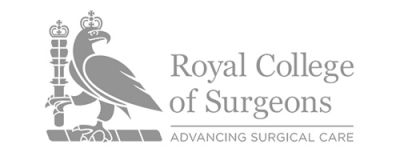OVERVIEW
Medical science keeps advancing and improving year by year – and so does the technology we use in our treatments.
One of the biggest developments in recent orthopaedics has been the introduction of robot-assisted surgery for joint replacement, which Mr Berstock has been performing at the Sulis hospital since its arrival last year. Experts have described the technology as a “game-changer”, since it’s bringing new levels of precision and customisation to the knee replacement process.
What is robotic replacement surgery?
Traditional joint replacement is an operation that have become painful and dysfunctional because the bone endings have lost their protective cartilage covering – usually due to osteoarthritis, or a previous injury. During the operation, the surgeon removes damaged material from the bones and fixes a smooth, artificial implant in their place.
In robot-assisted joint replacement, the surgeon uses a system called the Stryker Mako to help plan and perform these operations with an exceptional degree of accuracy. The Mako brings several major benefits to the pre-operative and surgical process.
It’s bespoke – the system uses advanced 3D modelling to map the anatomy of your joint and create a detailed individual plan for your operation, well before you come into theatre. It enables us to pre-plan the exact cuts we need to make before the procedure, and tailor them precisely to your joint. See How it works, below.
It’s precise – the Mako’s robotic arm can operate within a fraction of a millimetre. Its software provides a visual path for the surgeon as he makes the planned cuts and fixes the implant, while the arm uses tactile resistance to prevent him moving outside the planned boundaries. Preserving the maximum healthy bone and tissue is important in surgery, because it helps to reduce post-operative pain and speed recovery. See What the research is saying.
It’s time-tested – although the concept sounds futuristic, Mako has actually been operating since 2006 (see our surgical timeline, below). To date more than 100,000 Mako procedures have been carried out, over 700 surgeons around the world regularly perform it, and the technology has been covered by more than 50 peer-reviewed clinical publications.
It’s natural – ultimately a surgeon’s goal in knee replacement is to create a joint that feels as natural as possible for the patient. While no kind of surgery can provide a totally guaranteed outcome, the Mako’s accuracy, predictability and tailored approach is helping us to give our patients the best chance of a ‘best-fit’ replacement.
Robot-controlled? Not exactly…
It’s worth adding that, while the technology often makes people imagine a completely autonomous machine that takes over the doctor’s job, the human surgeon stays in control of the robot through the whole operation.
The surgical component of the Mako is actually a highly calibrated arm, equipped with a specialised cutting tool: the official title is “robotic-arm assisted surgery”. Precision software guides the surgeon in making the pre-planned cuts with the arm, but the surgeon controls the arm and we can override the system at any time. In other words the Mako is more like a finely tuned assistant for the surgical team, helping to make a good operation even better.
HOW IT WORKS
Discussion with James is important to answer any questions that you may have. For information about any additional conditions not featured within the site, please contact us for more information.







